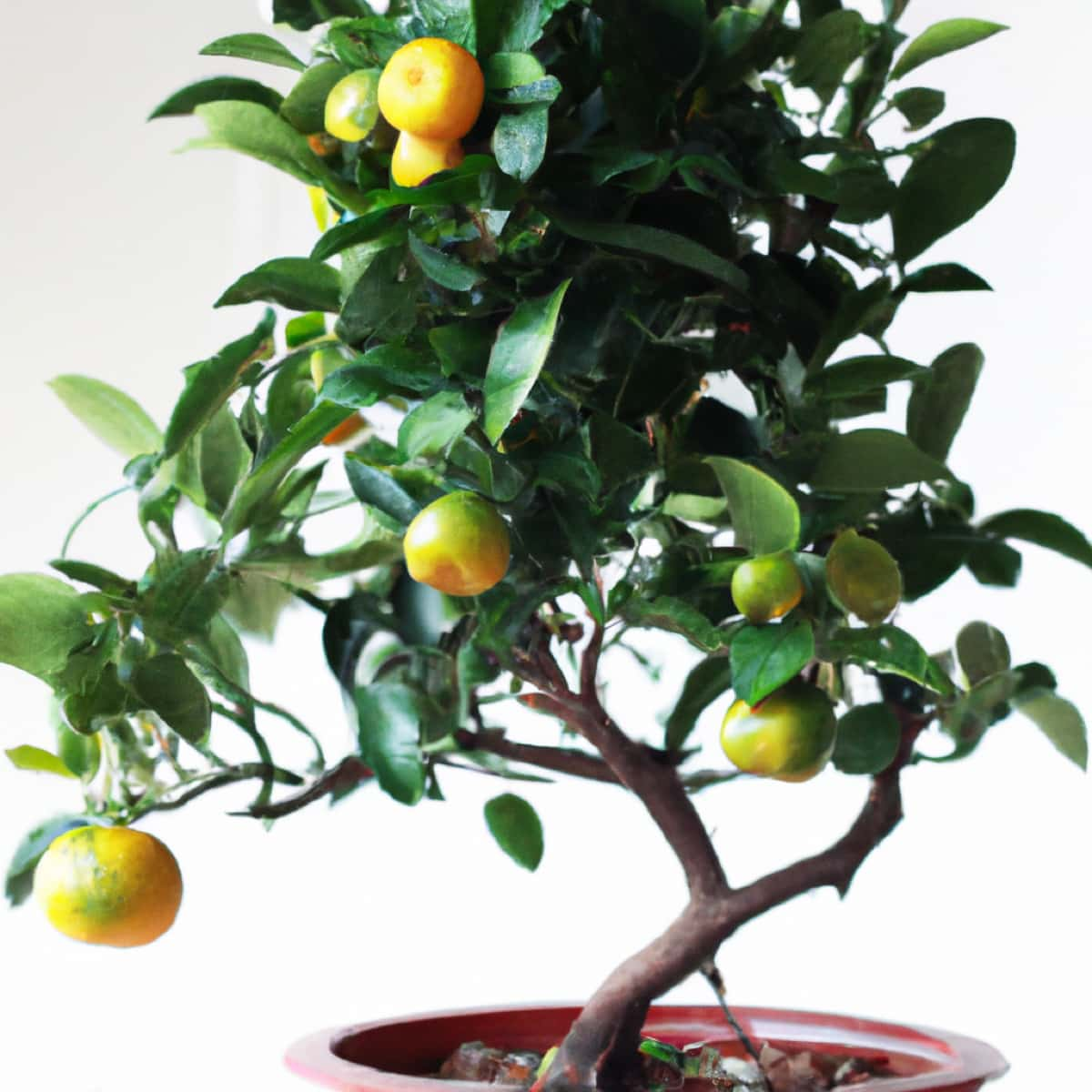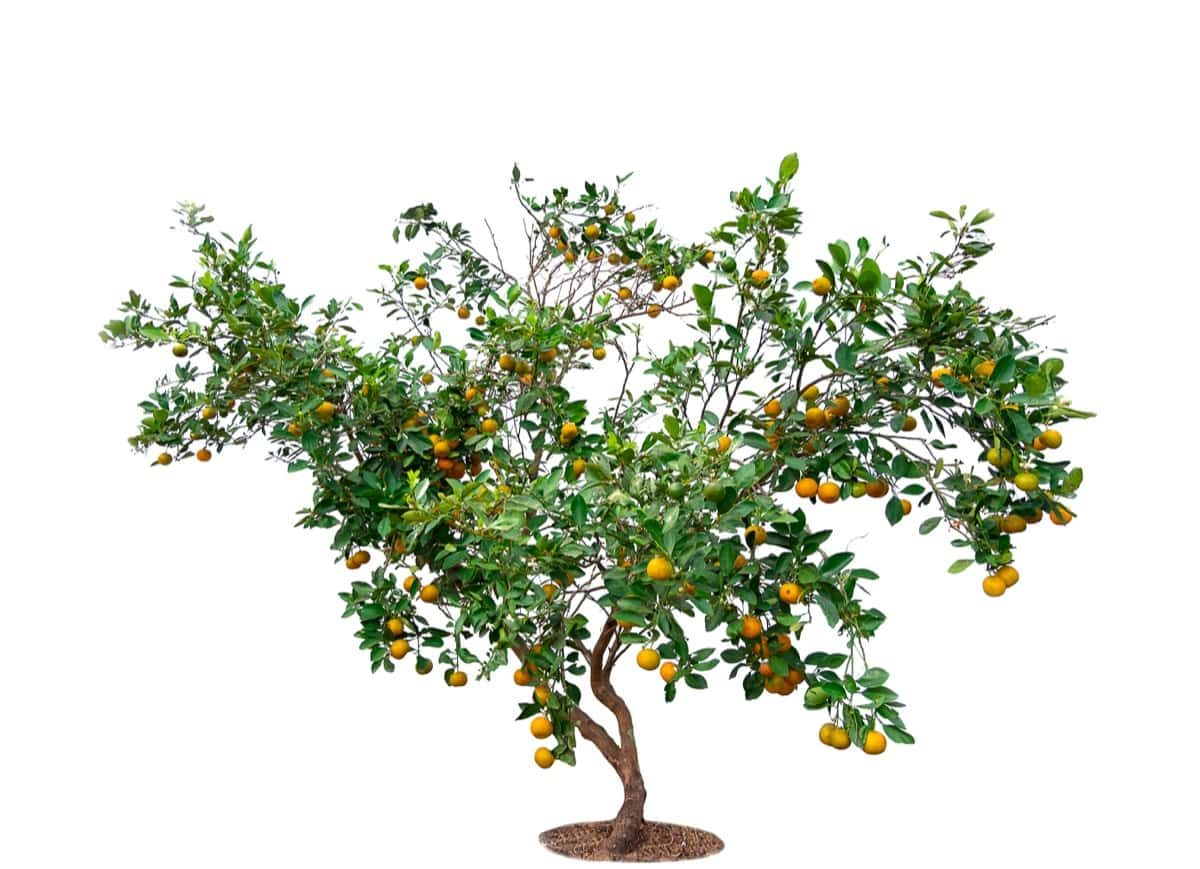Bonsai, an ancient art form from Japan, has enthralled hobbyists and plant enthusiasts for centuries. One might immediately associate it with traditional trees such as the Japanese Maple or Chinese Elm. However, the art of bonsai extends beyond these, welcoming an abundance of variety, including the fascinating citrus category.

Imagine a miniature orange or lemon tree sitting on your windowsill, fruiting and flowering. As a bonsai, it becomes an aesthetic addition to your home or office and an engaging horticultural journey. If you have wondered how to bonsai a lemon tree or asked, “How do you grow citrus bonsai,” this article will serve as your comprehensive guide, leading you from seed to mature bonsai citrus.
How to Pant, Grow, and Care for Bonsai Citrus
Choosing the Right Bonsai Citrus Variety
Firstly, choosing the right variety is paramount to success. It’s essential to consider the growth habit, leaf size, fruit type, and overall aesthetics. Bonsai citrus includes an array of varieties like lemon, lime, and orange, each with its distinct attributes. Opting for a lemon bonsai from seed provides a rewarding experience.
As the plant grows, you get the satisfaction of watching it thrive. Furthermore, lemon bonsai can be a great choice for indoor settings as they are relatively compact and highly fragrant when in bloom. Other popular indoor bonsai citrus varieties include calamondin oranges and kumquats. Selecting the right variety will set the stage for successful bonsai citrus cultivation.
Preparing the Soil for Bonsai Citrus
Moving on to the next critical factor in bonsai cultivation is soil preparation. The best soil for citrus bonsai trees might come to mind. Citrus trees generally thrive in well-draining, slightly acidic soil. However, it’s necessary to tailor this need to the specific requirements of bonsai cultivation. The ideal bonsai soil allows excellent drainage to prevent root rot while retaining adequate moisture and nutrients.
A well-balanced mix might include organic compost, fine gravel, and clay-like Akadama. However, remember that Akadama should not be overwatered, as it tends to break down and compact. This can impede aeration and lead to root health issues. Therefore, proper soil preparation sets the foundation for healthy bonsai citrus.
Planting Bonsai Citrus in Containers
After readying the soil, plant your bonsai citrus in containers. The size and depth of the container should correspond with the size of your bonsai citrus. It’s worth noting that bonsai citrus trees, like their full-sized counterparts, have a relatively extensive root system, so they require a deeper container compared to other bonsai varieties.
Adequate drainage holes are essential to ensure water does not stagnate in the pot. Whether starting a lemon bonsai from seed or with a young tree, planting involves gently placing the plant or seed in the container, covering the roots or seed with the prepared soil, and watering it thoroughly.
Watering Techniques for Bonsai Citrus
Proper watering is vital for the well-being of your bonsai citrus tree after planting. Balance is key—avoid both overwatering and underwatering. Overwatering can lead to root rot, while underwatering can cause the plant to dry up. A general rule of thumb is to water the bonsai citrus when the top layer of soil starts to dry out. However, it’s important to adjust this based on the climate, humidity, and pot size. Watering the bonsai thoroughly until water runs out of the drainage holes ensures that the entire root system gets adequately hydrated.
Fertilizing Bonsai Citrus
In addition to watering, fertilizing bonsai citrus is necessary for its growth and development. Fertilizers replenish the soil’s nutrients, encouraging foliage growth and, eventually, flowers and fruit. Citrus-specific fertilizers often contain a higher nitrogen ratio for leaf development and other essential nutrients like phosphorus, potassium, and trace elements.
It’s important to follow the manufacturer’s instructions regarding fertilizers’ application rate and frequency to avoid nutrient burn. Generally, citrus bonsai should be fertilized during the growing season, and the frequency should be reduced during winter.
In case you missed it: 11 Common Problems With Garden Sorrel: How to Fix, Treatment, and Solutions

Pruning and Shaping Bonsai Citrus
Pruning and shaping bonsai citrus are fundamental aspects of bonsai art. They enable the maintenance of the tree’s miniature size and aesthetic form. Pruning involves removing excess or unwanted growth to focus the plant’s energy on desired branches. It helps maintain the tree’s overall size and promotes a thicker trunk and branches.
In contrast, shaping involves guiding the plant’s growth in a particular direction or form. This can be achieved by using bonsai wires to direct the branches or using weights to pull them down. Patience and a keen eye for aesthetics are key to pruning and shaping bonsai citrus.
Protecting Bonsai Citrus From Pests and Diseases
Similar to other plants, bonsai citrus can be affected by pests and diseases. Common issues include aphids, scale insects, and fungal infections. Regular monitoring can help catch these issues early before they become significant problems. Natural insecticides and fungicides can be effective in managing these issues. Maintaining good hygiene practices, such as removing dead leaves and branches, is also beneficial, which can harbor pests and diseases. Adequate watering, sunlight, and nutrition also play a role in maintaining strong and resilient bonsai citrus.
Providing Adequate Sunlight for Bonsai Citrus
Sunlight is an integral part of the growth and development of bonsai citrus. Whether it’s a bonsai lemon tree indoor or an outdoor orange bonsai, adequate light is vital for photosynthesis, promoting healthy growth and fruit production. Indoor bonsai citrus should be placed near a window with plenty of light. If natural light is insufficient, supplemental lighting can be used. Outdoor bonsai citrus should be placed in a spot that receives full sun for at least six hours daily. However, protecting the tree from the extreme midday sun is essential, which can cause leaf scorch.
Winter Care for Bonsai Citrus
Winter care for bonsai citrus involves protecting the tree from harsh weather conditions and reducing watering and fertilizing schedules. Despite being hardier than other bonsai varieties, bonsai citrus is not fully frost-resistant. Therefore, if temperatures drop significantly, moving the bonsai indoors or providing some protection is advisable. Watering should be reduced during winter as the tree’s metabolic activities slow and the evaporation rate decreases. Similarly, the application of fertilizer should be minimized during these months.
Repotting Bonsai Citrus
Finally, repotting bonsai citrus is an important step to ensure the health and longevity of the tree. Over time, the root system of the bonsai citrus tree may become root-bound, causing the tree to become stunted. Repotting provides fresh soil and allows you to prune overgrown roots. The process usually includes removing the tree from its pot, trimming the roots, and transferring it to a bigger container with new soil. The frequency of repotting depends on the tree’s growth rate, but generally, young trees require repotting every two years, while older ones can be repotted every three to five years.
In case you missed it: Discover the Top 10 Best Chicken Breeds for Gardens: Companions for Urban Homesteading

Conclusion
The process of growing and caring for bonsai citrus is a rewarding endeavor that combines art and horticulture. From choosing the right variety and preparing the soil to pruning and shaping, every step provides an opportunity to engage with the plant and contribute to its growth and development. Bonsai citrus adds a touch of nature’s beauty to your space and serves as a testament to your patience, skill, and love for these miniature wonders.
- Feed Your Flock for Less: Top 10 Tips to Save on Chicken Feed
- Ultimate Guide to Ossabaw Island Hog: Breeding, Raising, Diet, and Care
- Hatching Answers: The Top 10 Reasons Your Chickens Aren’t Laying Eggs
- Eggs and Economics: Breaking Down the Cost of Raising Backyard Chickens
- Defend Your Greens: Proven Methods to Keep Iguanas Out of Your Garden
- Ultimate Guide to Cinnamon Queen Chicken: A Comprehensive Guide for Beginners
- Ultimate Guide to California Tan Chicken: Breeding, Raising, Diet, Egg-Production and Care
- Ultimate Guide to Marsh Daisy Chicken: Breeding, Raising, Diet, and Care
- 10 Types of Chicken Farming Businesses You Can Start for Profits